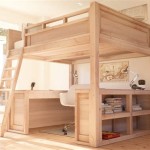Standard Width of a Queen Size Bed
Understanding bed dimensions is crucial for ensuring a comfortable and functional bedroom. This article focuses on the standard width of a queen-size bed, exploring its dimensions, variations, and considerations for selecting the right size for individual needs.
The standard width of a queen-size bed is 60 inches. This measurement refers to the width of the mattress itself, not the bed frame. It's important to note that frame dimensions can vary, impacting the overall footprint of the bed in a room.
While the width remains consistent at 60 inches, the length of a standard queen mattress is typically 80 inches. This provides ample sleeping space for most individuals and couples. However, taller individuals might find this length slightly restrictive. Therefore, considering one's height is an important factor when choosing a queen-size bed.
Variations in queen-size bed dimensions are minimal. The 60x80 inch measurement is widely accepted as the standard across manufacturers. However, slight deviations of a fraction of an inch are possible due to manufacturing processes. These minor differences are generally negligible and do not significantly impact the overall fit of bedding or compatibility with standard queen-size frames.
There are other queen-size variations, like the Olympic queen and the California queen, that differ primarily in length and width. The Olympic queen measures 66 inches wide and 80 inches long, providing extra width. The California queen, also known as the Western queen, measures 60 inches wide and 84 inches long, offering extra length for taller individuals. These variations provide options for those seeking more sleeping space without upgrading to a king-size bed.
Choosing the right bed size involves careful consideration of several factors. Room size is paramount. A queen-size bed, while offering comfortable sleeping space, might overwhelm a smaller bedroom. Measuring the room and visualizing the bed's placement can help determine whether a queen size is appropriate. Leaving adequate space for movement around the bed is essential for maintaining a functional and comfortable bedroom environment.
Sleeping habits and personal preferences also play a significant role in bed size selection. Individuals who tend to sprawl or move around a lot during sleep might find a queen-size bed more comfortable than a smaller full-size bed. Couples sharing a bed also benefit from the extra space provided by a queen size. Personal comfort preferences should be prioritized when making this decision.
The existing bedroom furniture should also be considered. If purchasing a new bed requires replacing other furniture pieces to maintain balance and functionality within the room, it adds to the overall cost and complexity of the purchase. Ensuring the new bed complements existing furniture and allows for adequate storage and movement within the room is crucial.
Budget constraints are another significant factor. Queen-size beds, while generally more expensive than full-size beds, offer a balance of comfort and affordability compared to larger king-size beds. Considering the overall budget for bedroom furnishings and prioritizing needs and preferences will help in making an informed decision.
Beyond the mattress itself, the bed frame adds to the overall dimensions. Frame styles vary widely, from simple platform beds to elaborate four-poster designs. Each style contributes differently to the overall footprint of the bed. A larger, more ornate frame will increase the space the bed occupies in the room. Therefore, considering the frame dimensions, in addition to the mattress size, is essential for accurate space planning.
The height of the bed, including the mattress and frame, also contributes to the perceived size within a room. A taller bed can make a room feel smaller, while a lower bed can create a sense of spaciousness. This is particularly relevant in rooms with lower ceilings. Therefore, the bed's height should be factored into the decision-making process, considering both the mattress thickness and the frame height.
Properly measuring the available space in the bedroom, considering both length and width, is a crucial step before purchasing a queen-size bed. This ensures that the bed fits comfortably within the room, leaving sufficient space for movement and other furniture. Accurate measurements prevent potential issues with placement and functionality after purchase.
Comparing different queen-size bed options, including various brands and models, allows for informed decision-making. Considering factors like mattress materials, construction, and warranty, alongside frame styles and materials, can lead to a more satisfactory purchase. Comparing prices and features helps in selecting the best option that meets individual needs and preferences within budget constraints.
Consulting with furniture specialists can provide valuable insights into selecting the right queen-size bed. Experts can offer guidance on mattress types, frame styles, and overall bedroom design considerations. Their expertise can help in making a well-informed decision based on individual needs and preferences.

Queen Bed Dimensions A Guide Nectar Sleep

Queen Size Bed Dimensions Compared To Other Sizes Eachnight
What Is The Width Of A Queen Size Bed Frame Quora
What Is The Width Of A Queen Size Bed Frame Quora

Mattress Sizes Chart And Bed Dimensions Guide Amerisleep

Bed Sizes Are Confusing King Size Dimensions Mattress

Mattress Sizes In Singapore Origin

2024 Bed Frame Sizes Mattress Dimensions B2c Furniture

Queen Size Mattress Dimensions How Big Is A Bed

Image Result For Size Bed Dimensions Metric Queen Frame Sizes
Related Posts







